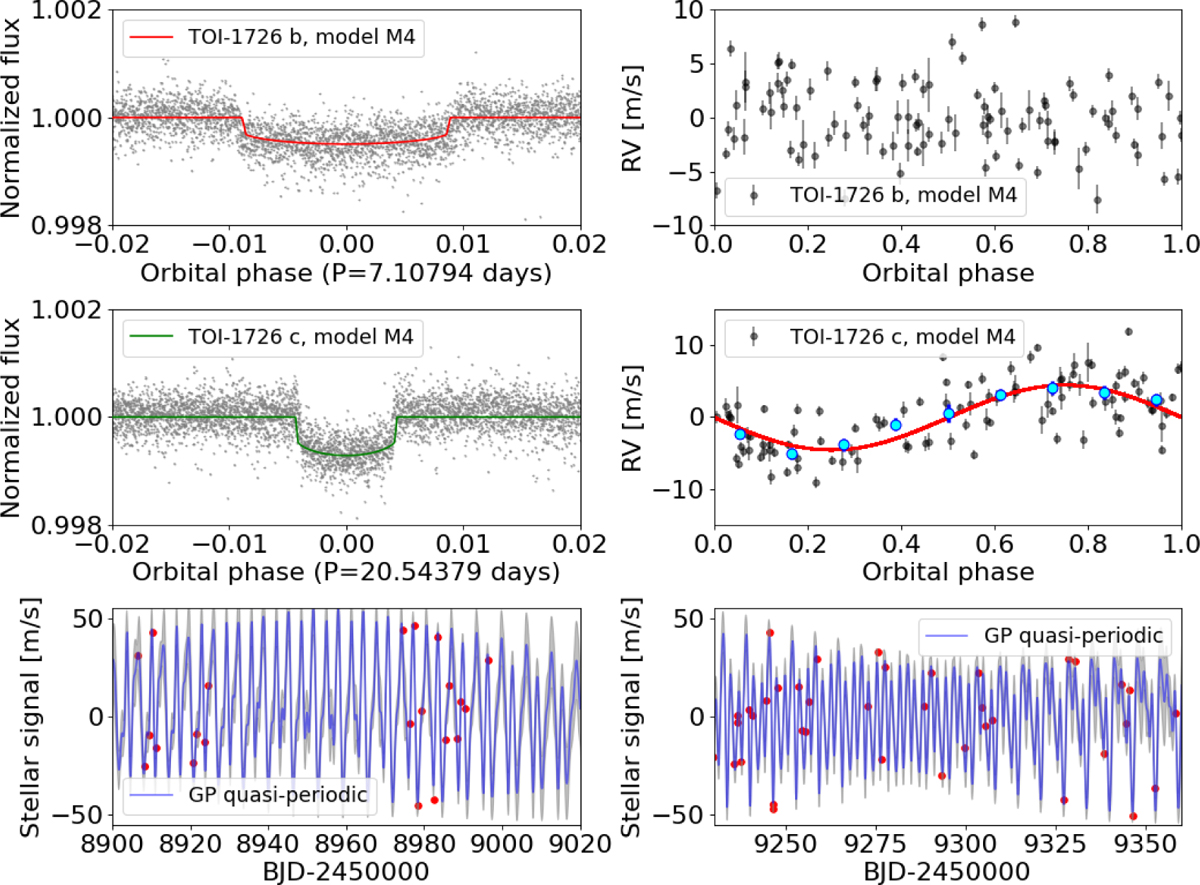Fig. 6

Download original image
First two rows: TESS light curve and best-fit transit models (left panels), and spectroscopic orbits (HARPS-N DRS RVs; right panels) related to planets HD 63433 b and HD 63433 c. Here, we show the solution obtained with model M4. The upper right plot shows the RV residuals, after removing the Doppler signal due to HD 63433 c and the stellar activity term from the original data, phased to the orbital period of 7.01794 d: it appears clear that the spectroscopic orbit corresponding to HD 63433 b remains not characterised. The phase-folded plot for HD 63433 c shows the RV residuals after removing the stellar activity term from the original data. Third row: Zoomed view of the stellar activity term in the HARPS-N RVs, after removing the Doppler signal due to HD 63433 c from the original RVs, as modelled by a GP quasi-periodic kernel. In model M5, the GP quasi-periodic kernel was trained on the time series of the log ![]() chromospheric activity diagnostic.
chromospheric activity diagnostic.
Current usage metrics show cumulative count of Article Views (full-text article views including HTML views, PDF and ePub downloads, according to the available data) and Abstracts Views on Vision4Press platform.
Data correspond to usage on the plateform after 2015. The current usage metrics is available 48-96 hours after online publication and is updated daily on week days.
Initial download of the metrics may take a while.


